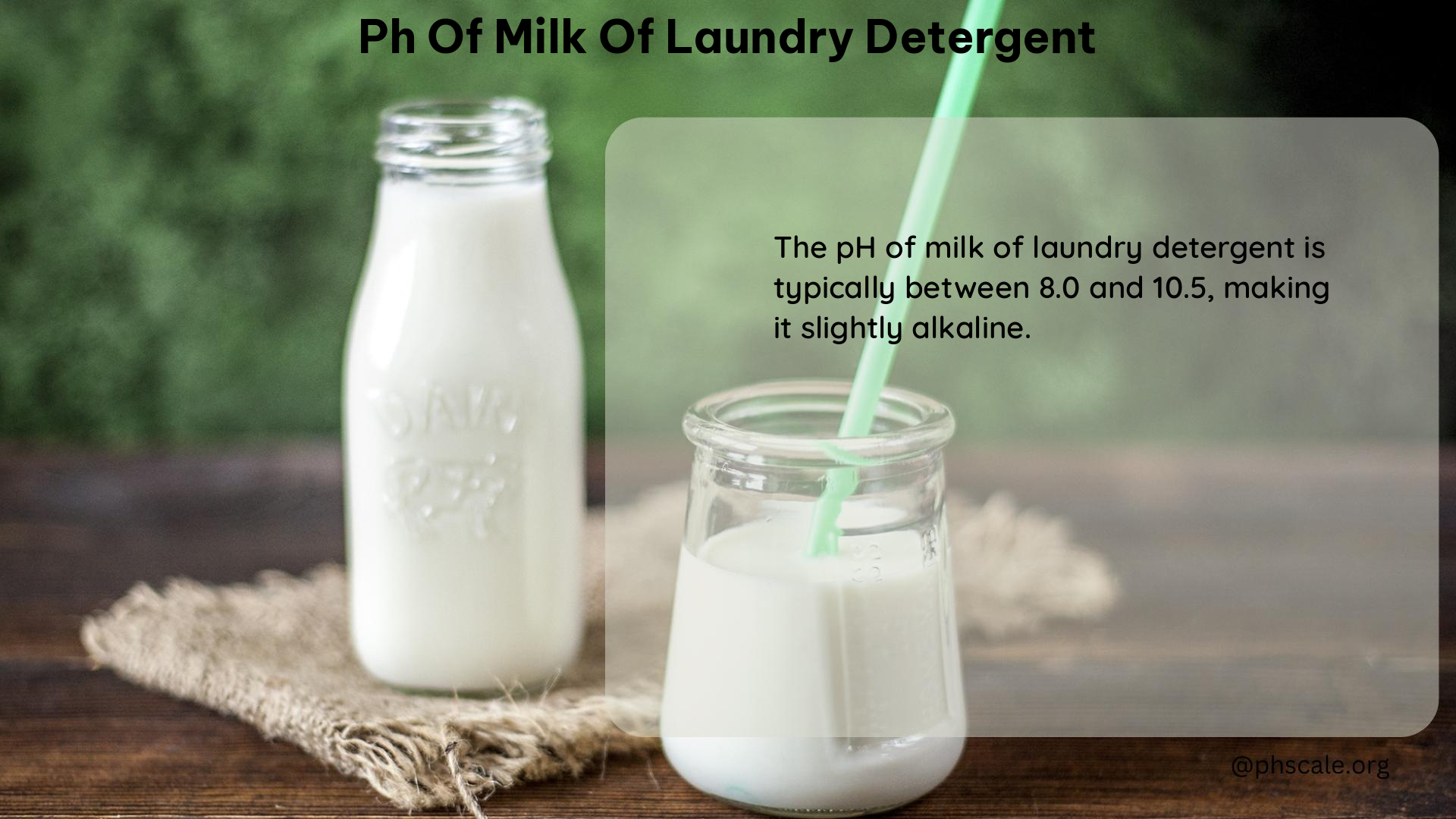The pH of laundry detergents is a crucial factor in ensuring the effectiveness and safety of your cleaning routine. While the term “milk of laundry detergent” may seem unusual, understanding the pH levels of detergents and their components can help you make informed decisions when it comes to caring for your fabrics. In this comprehensive blog post, we’ll dive deep into the world of laundry detergent pH, exploring the ranges, the impact on specific fabrics, and the chemical composition that contributes to the overall pH.
Understanding the pH Range of Laundry Detergents
Laundry detergents generally fall within a neutral to weakly alkaline pH range, typically between 7.0 and 9.0. This range is essential for effective cleaning, as the alkaline nature of the detergents helps to break down and remove stubborn stains and dirt. However, it’s important to note that some specialized detergents, such as those designed for delicate fabrics, may have a slightly different pH range.
| Detergent Type | pH Range |
|---|---|
| Neutral to weakly alkaline | 7.0 to 9.0 |
| Weakly acidic to neutral | 5.0 to 7.0 |
| Alkaline | 10.4 to 10.7 |
Balancing pH for Specific Fabrics

When it comes to washing certain fabrics, such as wool or silk, it’s crucial to use a detergent with a pH closer to neutral (around 7) to avoid damaging the delicate fibers. This can be achieved by adding an acid to a high-pH detergent, but it’s essential to do so safely and in the right amount to prevent the creation of toxic gases or explosive mixtures.
The Chemical Composition and Its Impact on pH
The pH of a laundry detergent is directly influenced by its chemical composition. Detergents are typically made up of a combination of surfactants, builders, and other additives. The reaction of fatty acids with strong alkalis produces alkali salts, which contribute to the basic nature of the detergents.
Some of the key components and their impact on pH include:
- Surfactants: These are the primary cleaning agents in detergents and can be either acidic or alkaline, depending on their structure.
- Builders: These additives enhance the effectiveness of surfactants and can be alkaline in nature.
- Bleaches: Oxygen bleaches are typically acidic, while chlorine bleaches are alkaline. These are used to remove tough stains.
- Fabric softeners: These are usually weakly acidic and should be used separately from other detergents to avoid pH imbalances.
Dealing with pH Imbalances
To address pH imbalances in your laundry routine, it’s essential to choose the right detergent for the specific fabrics you’re washing. For delicate fabrics like wool, a neutral pH detergent is recommended to prevent damage. For tougher stains, alkaline detergents or bleaches may be necessary.
When adjusting the pH of a detergent, it’s crucial to follow the manufacturer’s instructions and take necessary safety precautions. Mixing detergents or adding acids can create potentially hazardous situations, so it’s always best to err on the side of caution.
Conclusion
The pH of laundry detergents is a crucial factor in ensuring the effectiveness and safety of your cleaning routine. By understanding the pH ranges, the impact on specific fabrics, and the chemical composition of detergents, you can make informed decisions and maintain the longevity and quality of your fabrics. Remember to always follow the manufacturer’s instructions and take necessary safety precautions when dealing with pH imbalances.
References
- Reddit: “What acid can I use to lower the pH of a laundry detergent?” – https://www.reddit.com/r/chemistry/comments/4vins7/what_acid_can_i_use_to_lower_the_ph_of_a_laundry/
- Chemical Forums: “Stabilizing pH of liquid laundry detergents” – https://www.chemicalforums.com/index.php?topic=106228.0
- Activated Eco: “Is Detergent an Acid or Base? Unveiling the pH” – https://www.activatedeco.com/blogs/news/is-detergent-an-acid-or-base
